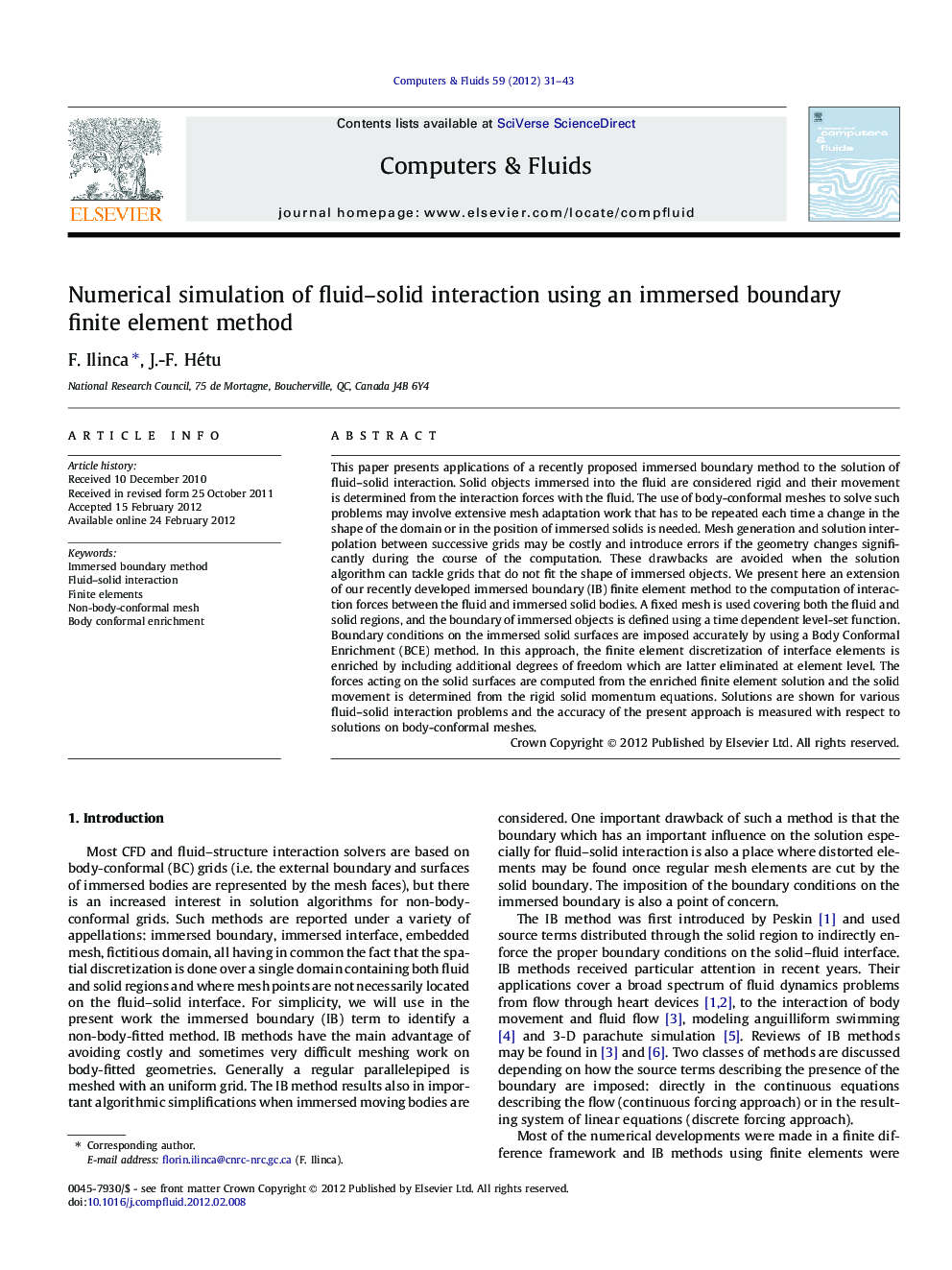| کد مقاله | کد نشریه | سال انتشار | مقاله انگلیسی | نسخه تمام متن |
|---|---|---|---|---|
| 762466 | 1462751 | 2012 | 13 صفحه PDF | دانلود رایگان |

This paper presents applications of a recently proposed immersed boundary method to the solution of fluid–solid interaction. Solid objects immersed into the fluid are considered rigid and their movement is determined from the interaction forces with the fluid. The use of body-conformal meshes to solve such problems may involve extensive mesh adaptation work that has to be repeated each time a change in the shape of the domain or in the position of immersed solids is needed. Mesh generation and solution interpolation between successive grids may be costly and introduce errors if the geometry changes significantly during the course of the computation. These drawbacks are avoided when the solution algorithm can tackle grids that do not fit the shape of immersed objects. We present here an extension of our recently developed immersed boundary (IB) finite element method to the computation of interaction forces between the fluid and immersed solid bodies. A fixed mesh is used covering both the fluid and solid regions, and the boundary of immersed objects is defined using a time dependent level-set function. Boundary conditions on the immersed solid surfaces are imposed accurately by using a Body Conformal Enrichment (BCE) method. In this approach, the finite element discretization of interface elements is enriched by including additional degrees of freedom which are latter eliminated at element level. The forces acting on the solid surfaces are computed from the enriched finite element solution and the solid movement is determined from the rigid solid momentum equations. Solutions are shown for various fluid–solid interaction problems and the accuracy of the present approach is measured with respect to solutions on body-conformal meshes.
► Fluid–solid interaction problems are solved by an immersed boundary method.
► A level set function is used to define the immersed solid boundaries.
► Body conformal enrichment of the finite element space is used.
► Additional degrees of freedom are eliminated at element level.
► The method is validated for an elastic cylinder oscillating in transverse direction.
Journal: Computers & Fluids - Volume 59, 30 April 2012, Pages 31–43